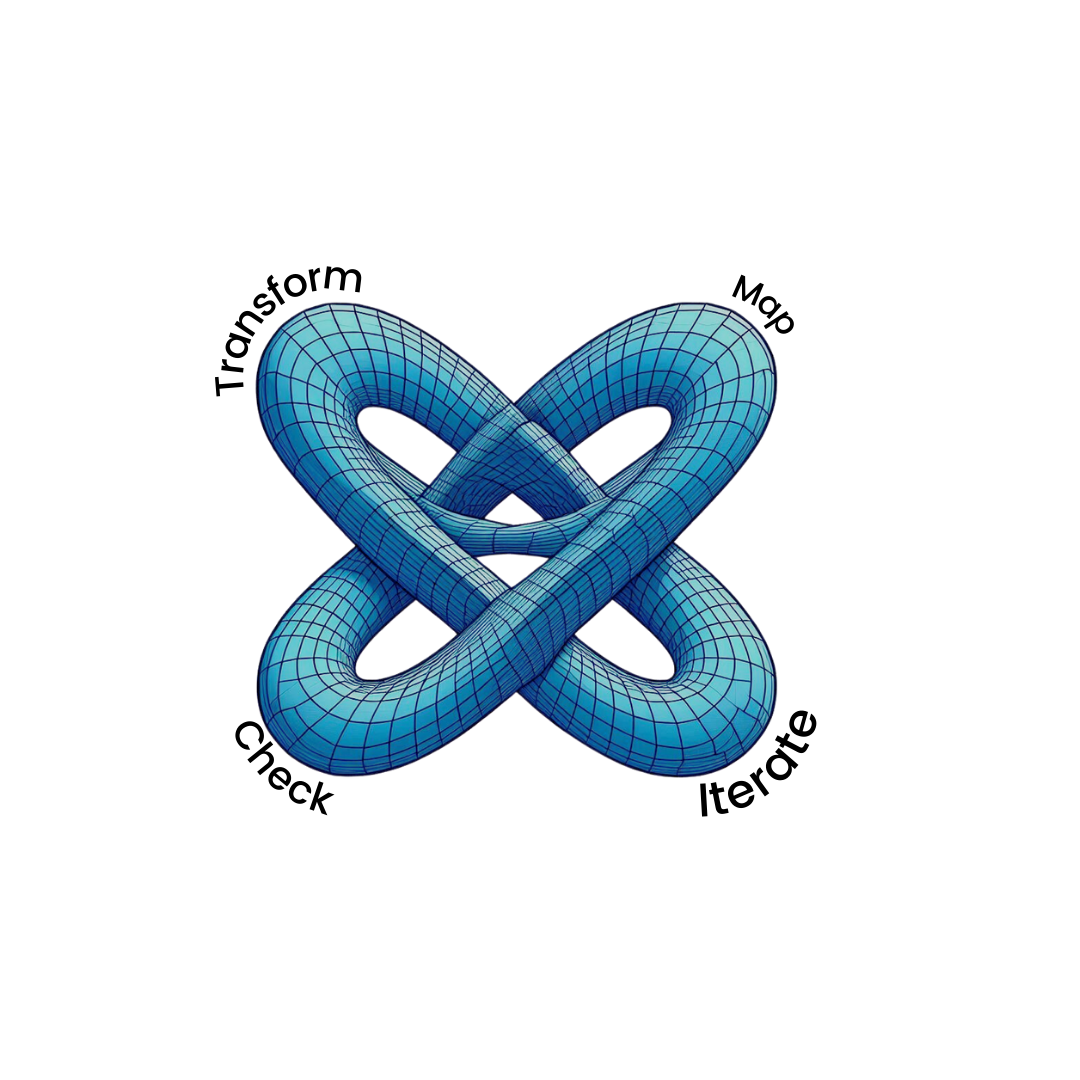Home of the MICT/HCTS Framework
The Mobius Theory
A Foundation for Understanding Interconnectedness and Cyclical Systems
What is the Mobius Strip?
The Mobius strip is a fascinating mathematical object with only one surface and one edge. It's created by taking a strip of paper, giving it a half-twist, and then joining the ends together. This seemingly simple construction has profound implications for how we understand systems and processes.

(Interactive element suggestion: You could replace the static image with a simple JavaScript animation showing the strip twisting and connecting, or a 3D model that users can rotate.)
Core Principles of the Mobius Theory
The Mobius Theory, inspired by the Mobius strip, proposes that many systems, both natural and artificial, are best understood through the following principles:
Interconnectedness
Just as the Mobius strip has a single continuous surface, seemingly separate parts of a system are often deeply interconnected and influence each other. Changes in one part can have unexpected effects on other parts. This challenges traditional linear, cause-and-effect thinking.
Cyclical Processes
The continuous loop of the Mobius strip represents the cyclical nature of many systems. Processes often don't have a clear beginning or end, but rather flow through continuous cycles of change, feedback, and adaptation.
Non-Linearity and Emergence
The twist in the Mobius strip represents non-linearity. Small changes in a system can have large, unexpected consequences. Furthermore, complex behaviors and properties can *emerge* from the interactions of simpler components. These emergent properties are not predictable from looking at the individual parts alone.
Holism (Wholeness)
The Mobius Strip, being a singular entity, represents a more holistic approach to understanding systems.
The Mobius Theory and the MICT Framework
The Mobius Theory provides the conceptual foundation for the Mobius Inspired Cyclical Transformation (MICT) framework. The MICT framework operationalizes these principles into a practical methodology for problem-solving, learning, and adaptation.
- Mapping (M): The Mapping stage directly relates to the principle of *Interconnectedness*. It involves understanding the current state of a system and the relationships between its components.
- Iteration (I): The Iteration stage embodies the *Cyclical Processes* and *Non-Linearity* principles. It involves experimenting with different actions and observing the results, recognizing that small changes can have large effects.
- Checking (C): The Checking stage (particularly in MICT/D/HQC) involves evaluating the results of iterations, providing feedback for the system to learn and adapt. This reflects the continuous feedback loops inherent in cyclical systems.
- Transformation (T): The Transformation stage represents the *Emergence* principle. Based on the feedback and learning from previous stages, the system adapts, leading to new emergent properties and behaviors.
The MICT framework, therefore, is not just *inspired* by the Mobius strip; it's a direct application of the Mobius Theory's principles to practical problem-solving and system design.
Further Exploration
The Mobius Theory is a rich and evolving concept with implications for various fields, including:
- Artificial Intelligence
- System Design
- Business Strategy
- Ecology
- Cognitive Science
- Physics and Cosmology
